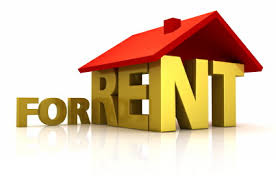 More Americans are renting and many of them pay up to half of their income for housing and utilities.
More Americans are renting and many of them pay up to half of their income for housing and utilities.
Enterprise Community Partners, a nonprofit agency that promotes affordable housing, looked at census data and ferreted out the data, including the fact that more families are putting half of their earnings into a rental place. Since 20007, the number of people in this category has risen to 11.25 million, an increase of 26 percent.
The problem becomes more acute when the increase in rental costs outpace the rise in hourly wages. Rentals have risen at nearly twice the rate of income, Labor Department figures show. The department reported that hourly wages rose just 2.1 percent in the past 12 months, compared with a 3.7 percent increase in rents. For some families, the difference is forcing hard decisions on how to make the income stretch far enough.
A combination of factors underlying the problem includes the slow recovery from the recession of the early 2010s. Construction of new rental units also has fed into the dilemma, as has the number of families that lost their homes during the recession, opting for renting instead. All told, the various factors create a bad situation for those who rent, including the prospect of homelessness if they can’t meet the demand.
Many have had to downsize, moving from rentals with three or more bedrooms to those with one or two. Throw in the increased costs of transportation, communications and health care and many families find themselves overwhelmed.
Studies show that more than 30 percent of renting families in California, Florida, New Jersey and New York fork over more than half of what they earn to pay for housing and utilities. In other states, excluding Alaska, South Dakota and Wyoming, the figure goes down to 20 percent.
Enterprise Community Partners say their data is consistent with that of other organizations interested in the housing market. The federal Department of Housing and Urban Development has published figures that show 12 million renters and homeowners who see half of their income go into housing costs. In 2013, the Harvard University Joint Center for Housing Studies estimated that 27 percent of renters were paying 50 percent of income for rentals and related costs. The increases reported by these agencies were “unimaginable just a decade ago,” the Harvard report stated.
The high costs of renting are affecting the upkeep of many rental units, according to the Consumer Federation of America. Those who rent cannot afford to make routine repairs, forcing the landlords to look at further increases to meet this need. The alternative is to let buildings fall into disrepair. Both the property owners and the renters are caught in the bind.
Construction can’t keep up with the increasing demand. This spring, the National Low Income Housing Coalition reported a shortage of 7.1 million apartments for low income renters. More than 320,000 units are expected to be ready for occupancy this year, according to the Commerce Department. The shortages are most acute in the Western states.
But until demand and supply reach some semblance of balance, the prospects for higher rentals that absorb greater percentages of income are likely to continue.